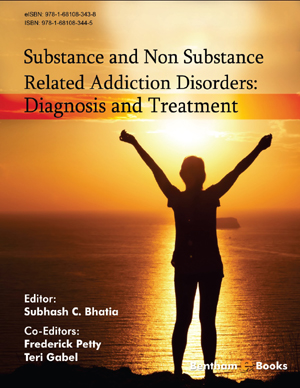Abstract
This chapter reviews the epidemiology and pathophysiology of alcohol use disorders. No two patients with alcohol use disorders are the same and recognition of these patients in our practice is the first priority. Diagnostic indicators and the CAGE questions that can be used to assist in the identification of patients with alcohol use disorders are presented. Non-drug therapies are integral and include lifestyle changes, group therapies (alcoholics anonymous), and individual therapies (i.e., cognitive behavioral therapy). These and other non-drug treatment options are discussed in this chapter. Medication options for the management of outpatient alcohol withdrawal are discussed and include benzodiazepines and anticonvulsant agents (off-label use). Medications to assist in maintaining sobriety and reduce craving should be offered to all patients. Medications discussed in this chapter include acamprosate, naltrexone and disulfiram. The information presented includes discussion of patient specific characteristics such as renal and hepatic function and underlying psychiatric issues such as anxiety, depression and insomnia that may affect medication selection and outcome. This chapter includes key learning points and a patient vignette to assist the learner. A patient education sheet on alcohol use disorders and additional patient resources accompanies the chapter.
Keywords: Acamprosate, Alcohol withdrawal, CAGE, Craving, Disulfiram, Naltrexone.






















